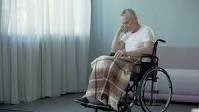Nursing Home Understaffing
January 2, 2020

Understaffing is the most common issue in nursing homes that can lead to abuse and neglect. Overworked and under supervised staff pose a greater risk to patients. Inadequate attention and frustration lead to mistakes and neglect.
This is a serious issue that plagues over 90% of nursing homes. Studies have proven that residents who live in understaffed nursing homes are at a greater risk of malnutrition, weight loss, bedsores, dehydration, infections, and pneumonia. Families of elderly patients are increasingly noticing this problem and are starting to hold nursing homes responsible for the abuses that occur as a result. (more…)
To resolve this issue there is a need for higher minimum nurse staffing standards for U.S. nursing homes based on multiple research studies showing a positive relationship between nursing home quality and staffing and the benefits of implementing higher minimum staffing standards. Studies have identified the minimum staffing levels necessary to provide care consistent with the federal regulations, but many U.S. facilities have dangerously low staffing. Secondly, the barriers to staffing reform are economic concerns about costs and a focus on financial incentives. The enforcement of existing staffing standards has been weak, and strong nursing home industry political opposition has limited efforts to establish higher standards. Researchers should study the ways to improve staffing standards and new payment, regulatory, and political strategies to improve nursing home staffing and quality.
Nursing homes have been overstating their staffing levels when reporting numbers to the government, according to new federal data analyzed by Kaiser Health News and reported by the New York Times.
Analysis of payroll records of more than 14,000 nursing homes revealed many staff fluctuations – particularly on the weekends. “On the worst staffed days at an average facility, the new data show on-duty personnel cared for nearly twice as many residents as they did when the staffing roster was fullest,” the Times reported.
The payroll records were gathered and published by Medicare as a requirement of the Affordable Care Act of 2010. Prior to the ACA requirement, facility ratings were based on nursing homes reporting their own staffing levels.
The Times article includes a searchable map that contains the staffing rate of the 14,000 nursing homes that provided data. Staffing rates were ranked from “much above average” to “much below average.”
With fewer nurses and care taking staff available, the quality of care provided to residents is being called into question.
As reported in the Times: “Volatility means there are gaps in care,” said David Stevenson, an associate professor of health policy at Vanderbilt University School of Medicine in Nashville, Tenn. “It’s not like the day-to-day life of nursing home residents and their needs vary substantially on a weekend and a weekday. They need to get dressed, to bathe and to eat every single day.”
At the same time, there is no minimum resident-to-staff ratio set by Medicare. The only requirement is that a registered nurse be present eight hours a day and a licensed nurse 24/7. The Centers for Medicare & Medicaid Services (CMS), which oversees the government’s Five-Star Quality Rating System, uses staffing as one of the variables in determining a facility’s score.
The CMS said in a statement to the Times that it “is concerned and taking steps to address fluctuations in staffing levels” that have emerged from the new data. This month it said it would lower ratings for nursing homes that had gone seven or more days without a registered nurse.
Saponaro, Inc. is chosen every day by attorneys and insurance professionals to provide expert witness services and litigation support that help build strong legal cases.
Over 40 years helping attorneys win trials by placing the best expert witnesses in over 40,000 cases.
Need an expert for your case? Contact us today.
